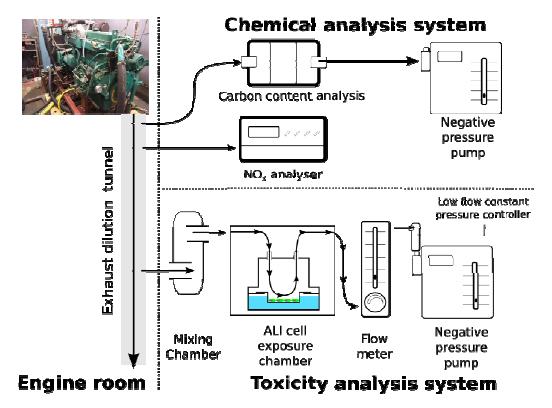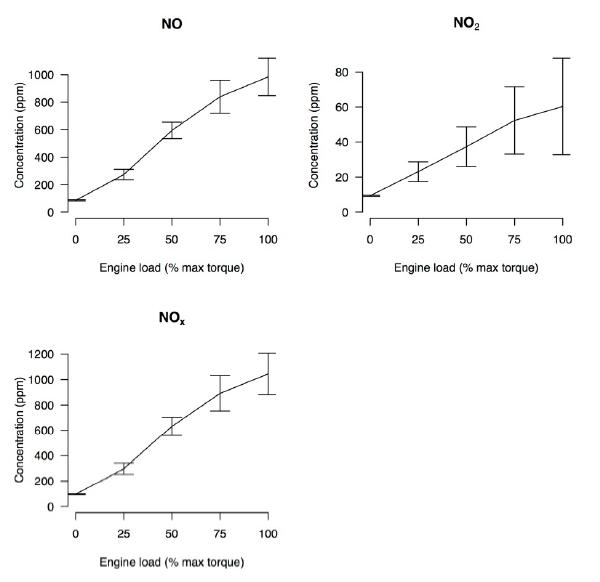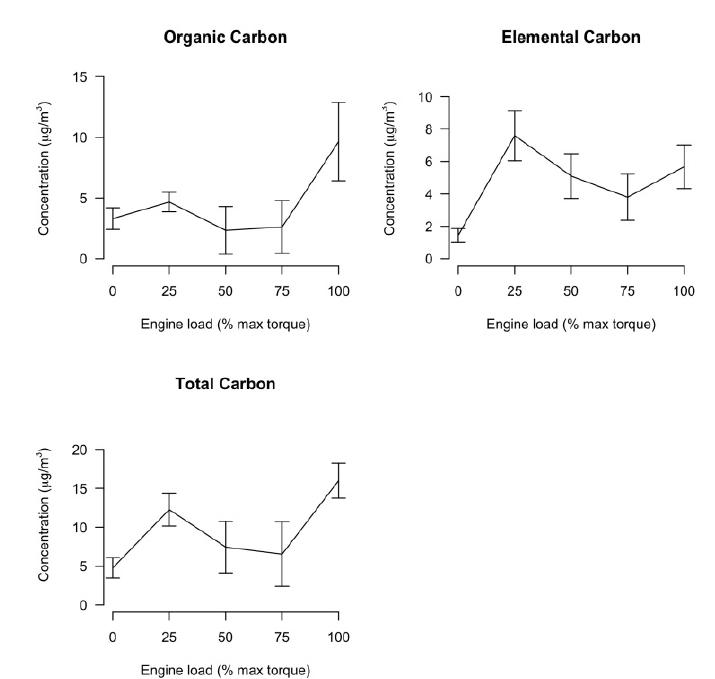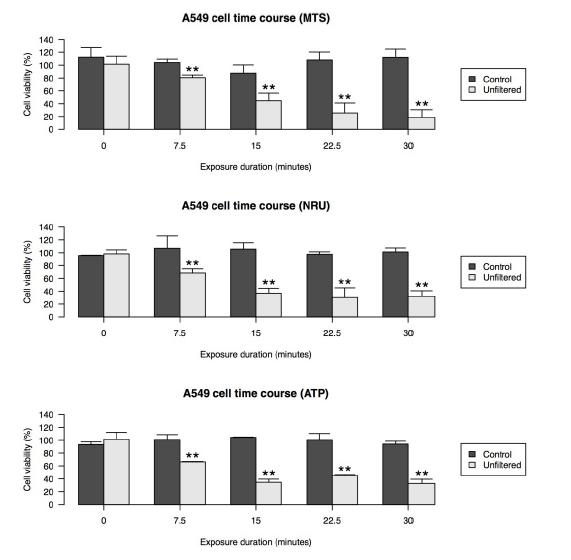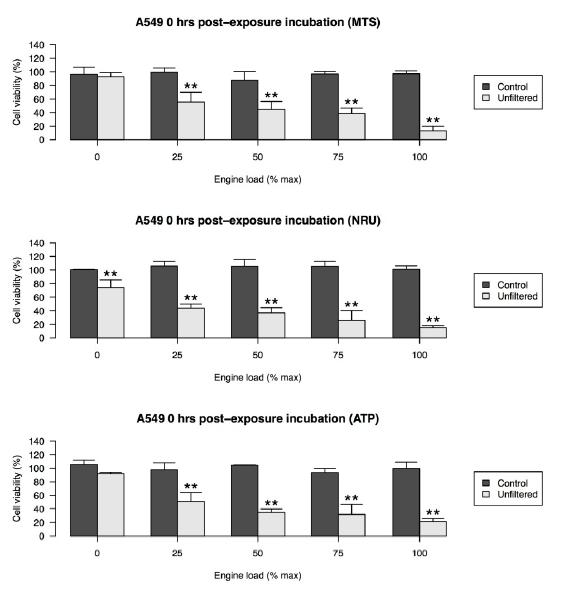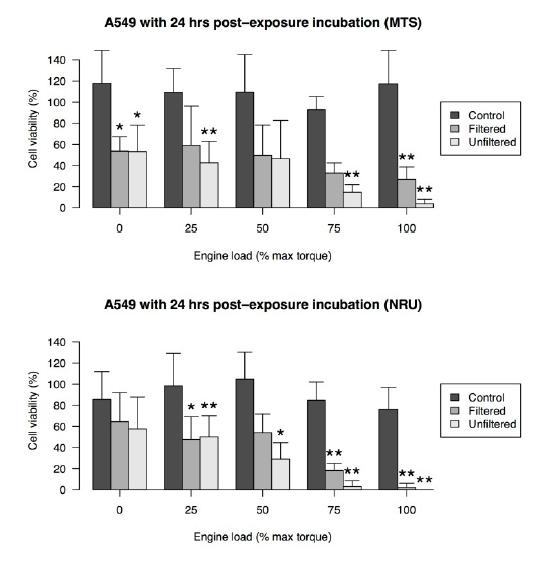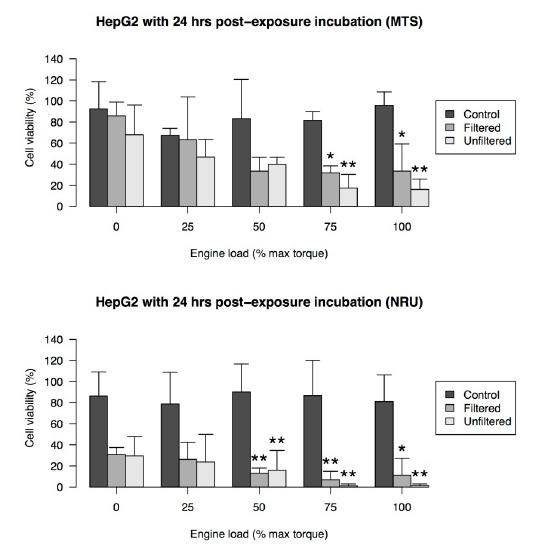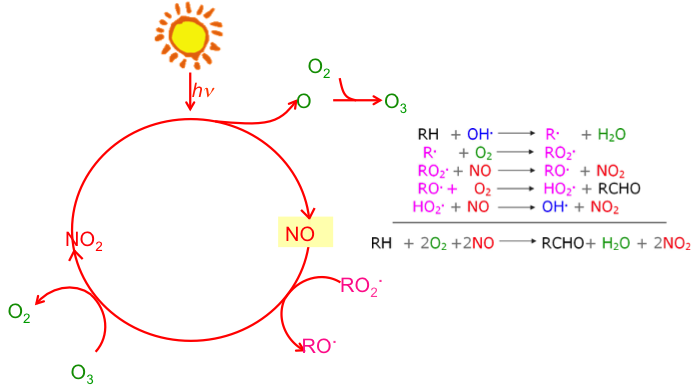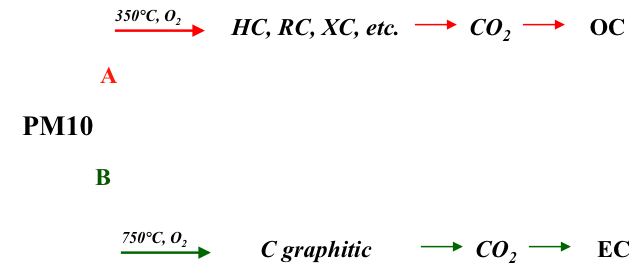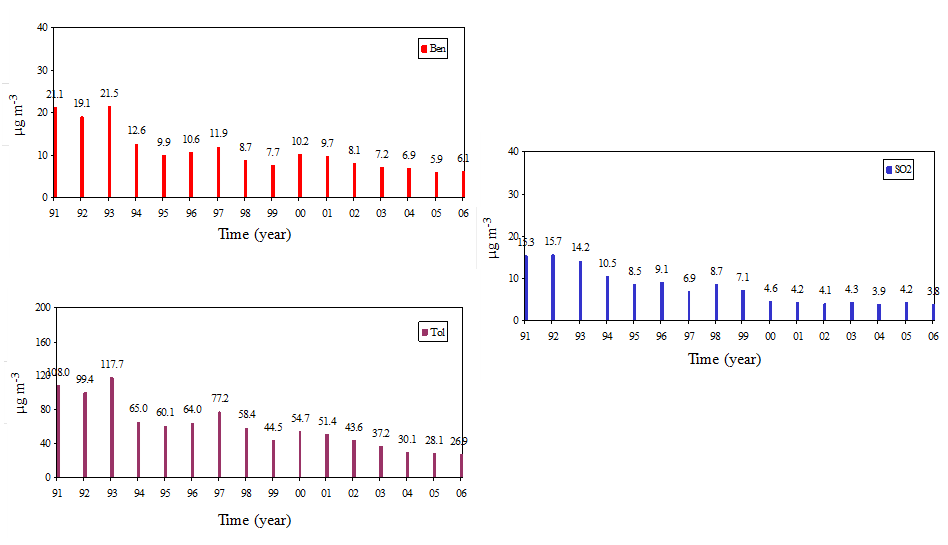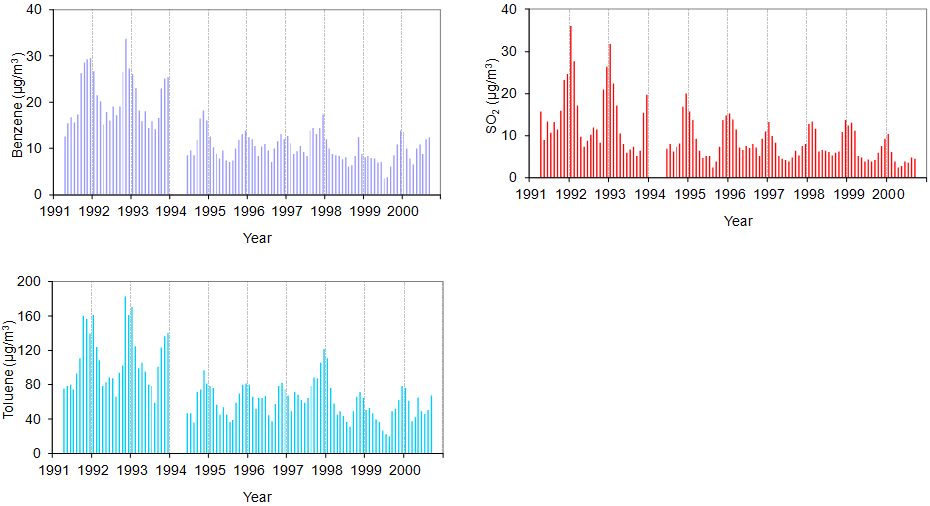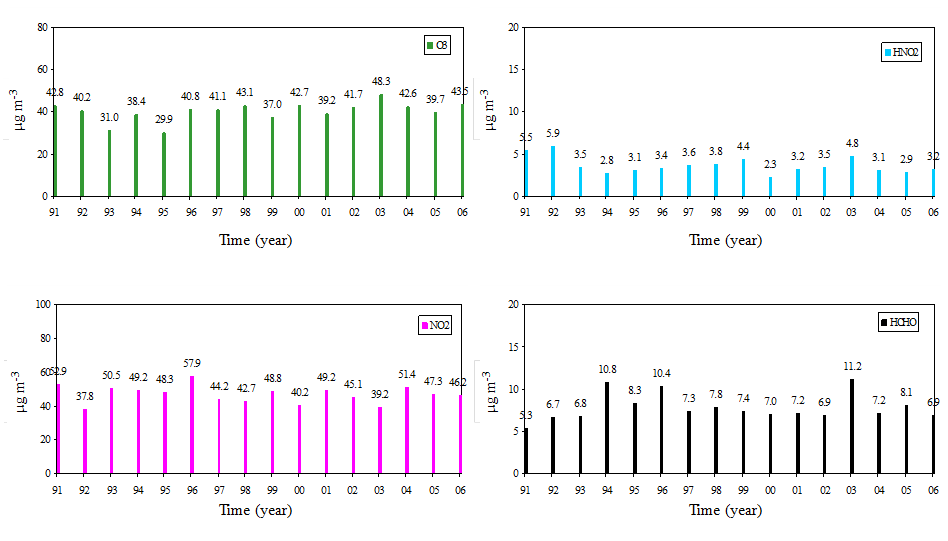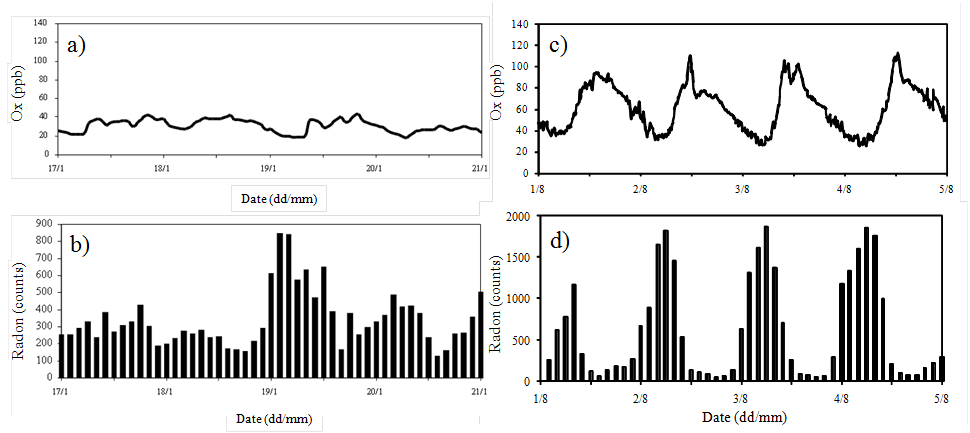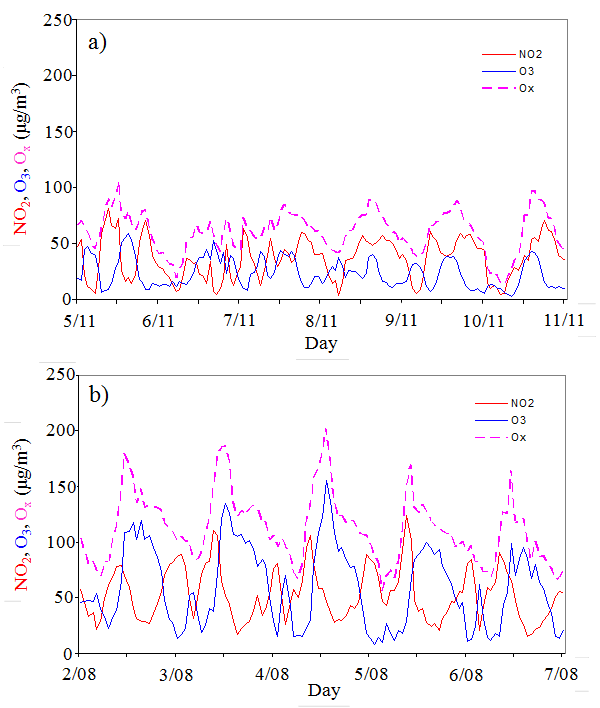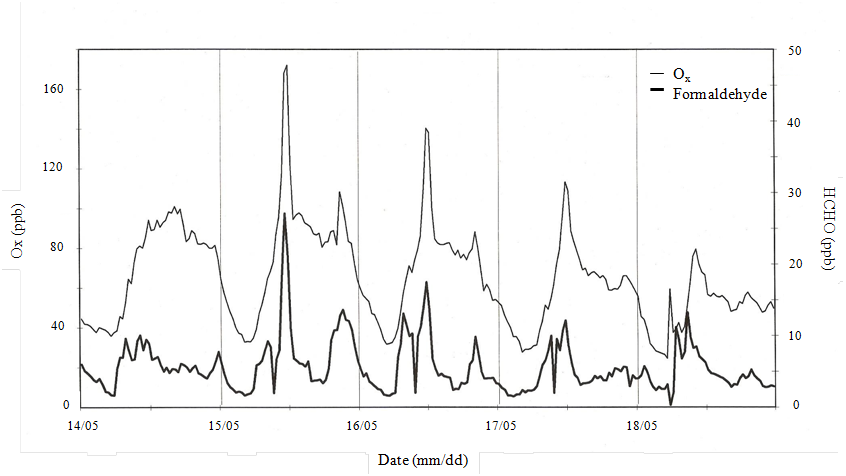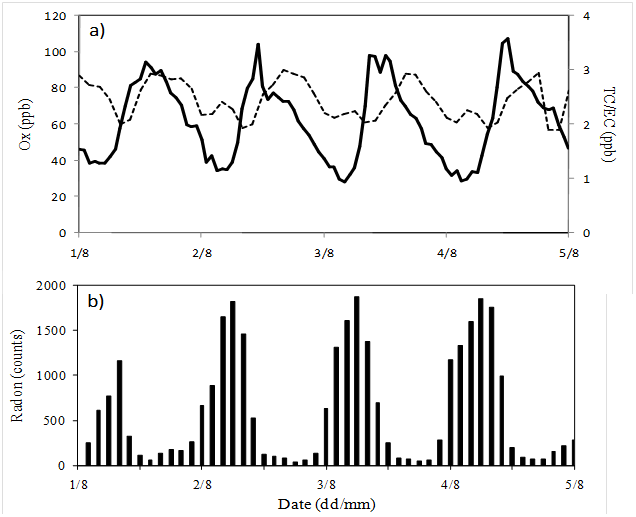1. Introduction
Air pollution is a major health concern where clinical and epidemiological studies suggest adverse effects on the cardiovascular [1,2,3,4,5,6] and pulmonary systems [7,8,9] including increased variance in heart rate, airway inflammation and asthma induced reactions. The adverse health effects are increased with closer proximity to the pollution source such as urban traffic dwellers and industrial workplace environments [10,11] such that long term exposure to air pollution may reduce life expectancy [12,13].
Air pollution consists of gaseous and particulate matter (PM) components. The gaseous components include oxides of nitrogen (NOx), carbon monoxide, carbon dioxide and various polyaromatic hydrocarbons. The PM components are categorised in terms of aerodynamic diameter size e.g. 10 µm and smaller (PM10) and 2.5 µm and smaller (PM2.5). PM research is popular due to the uncertainty around which size of PM may cause the most adverse health effect [14,15]. Additionally, considering the small size distribution, PM may translocate via the alveoli of the lungs into the cardiovascular circulatory system [16], resulting in a potential causality link between air pollution and cardiovascular effects.
Despite clinical and epidemiological study findings suggesting a link between air pollution and morbidity, the toxicity mechanisms of air pollution are not well understood. Animal based (in-vivo) studies have been traditionally used to determine the toxicity mechanisms. In-vivo studies using mice have suggested exposure to diesel exhaust during gestation may affect its offspring [17,18] and liver and kidney may be affected by diesel exhaust particles as well [19,20,21].
Growing concerns such as cross-species correlation error, ethical consideration [22,23] and low throughput [24] have encouraged human cell based (in-vitro) studies to be developed. In-vitro based studies allow the utilisation of a wide range of human based cellular systems such as the pulmonary type II epithelial (A549) cell line to model the human pulmonary system [25]. To further simulate the environment of living cells, various techniques are available which allow cells to be simultaneously exposed to pollutants e.g. cigarette smoke, nanoparticles and dust whilst receiving nutrients to maintain viability [26,27,28].
To date, a number of in-vitro based studies have employed direct and indirect sampling of diesel exhaust. Indirect sampling involves using substitute chemicals such as 3-nitrobenzonthrone to represent a component of diesel exhaust [29,30] or purifying diesel exhaust particles to obtain the required component [31,32,33]. Direct sampling requires access to a diesel engine which could be achieved by adapting the techniques employed in comparing biodiesel blend quality. The technique involves fixing one or more variables (typically engine speed and load) and comparing fuel consumption [34], exhaust particle size distribution [35], exhaust particle concentration [36] and/or gaseous pollutant concentrations [37,38,39]. Noting the techniques in generating the exhaust, it can be integrated into a modular system in which the exhaust generation system is independent of the in-vitro exposure system.
The concentration of diesel exhaust emission varies under different engine loads. At higher loads, diesel engines have the tendency to emit higher NOx (nitrogen oxides) levels due to higher temperatures of combustion within the combustion chamber [40,41]. The higher combustion temperature simultaneously decreases concentration of other gasses e.g. CO (carbon monoxide) due to higher CO2 (carbon dioxide) conversion. In addition, higher engine speed reduces the size distribution of emitted particulates [42], however as temperature decreases down the exhaust line, separate particulates agglomerate into chains of particles [43], therefore when measured, an exhaust particulate may exhibit a larger mean size compared to more recently formed particulates.
In this study, a biphasic cell culture system was utilised to allow human cells to be simultaneously exposed to diesel exhaust on their apex side whilst receiving nutrients from the basal lateral side (as previously developed by our research group) to simulate the human respiratory system while the diesel exhaust was generated under fixed settings [44,45]. The aim of this study was to determine the correlation between operating conditions, resulting exhaust and induced cytotoxicity.
2. Materials and Methods
2.1. Generation of diesel exhaust
A laboratory based 6700cc inline six-cylinder diesel engine (169 kW; 825 Nm at 1600 rpm; Volvo) was used. The engine was coupled to an eddy current dynamometer to allow fixture of engine speed and load. The diesel fuel was purchased from a commercial fuel station (Vortex premium diesel; CALTEX), which complied with Australian Standard 3570-1998 [46] as listed in Table 1.
Table 1. Australian Standard 3570 on diesel fuel specification
|
|
CALTEX Vortex Premium Diesel
|
AS3570 Requirement
|
|
Density at 15 °C
|
0.82‒0.87 kg/L
|
0.83 kg/L
|
|
Min Cetane Number
|
50
|
45
|
|
Max Sulphur Content (by mass)
|
0.5%
|
< 10 ppm
|
|
Energy density
|
N/A
|
35.9 MJ/L or 43.3 MJ/kg
|
The diesel engine was switched on and set to idle setting for a 15 mins stabilisation period before the target cells were exposed to the diesel exhaust. Following the stabilisation period the exhaust was delivered to the dynamic direct exposure chambers using negative pressure pumps (SKC Inc, USA) calibrated at a very low flow rate (≤ 37.5 mL/min). Cells were exposed to unfiltered and filtered exhaust allowing for a comparison in cytotoxicity contribution by the gaseous and particulate component of diesel exhaust. Filtration was performed using a polycarbonate membrane filter (37 mm diameter; 0.4 µm pore; SKC, USA).
2.2. Monitoring and analysis of exhaust emissions
2.2.1. NOx measurement
NOx concentration was measured with a high precision nitrogen oxide analyzer (EC9841AS; Ecotech, Australia). The sampling was performed by a vacuum pump capable of 1 L/min at 67 kPa, a scrubber was utilised to remove excess O3 and prevent damage to the pump.
2.2.2. Organic and elemental carbon measurement
For carbon content measurement, exhaust was sampled at 2.5 L/min flow for 15 mins on polycarbonate filters (37 mm in diameter; 0.4 µm pores) mounted on a three-piece cassette (SKC, USA). The filters were then analysed using the NIOSH 5040 principle to determine organic and elemental carbon content concentration.
2.3. In-vitro exposure
2.3.1. Cell types and culture conditions
Human pulmonary type II-like epithelial cells (A549) and human derived liver cells (HepG2) were cultured in sterile, vented 75 cm2 cell culture flasks with Dulbecco’s modified eagle medium: Ham’s F12 nutrient mixture (DMEM/F12; Gibco, USA) supplemented with 5% (v/v) newborn calf serum (NCS; Gibco, USA) and 1% (v/v) antibiotic solution containing: 10,000 units of penicillin, 10, 000 µg of streptomycin, and 29.2 mg of L-glutamine/mL (Gibco, USA). Cultured cells were kept at 37 °C in a humidified 5% CO2 incubator.
Cells were grown on porous membranes (0.4 µm) in Snapwell inserts. Snapwell inserts are a modified Transwell culture insert with a 12 mm diameter, providing 1.12 cm2 growth surface area (clear polyester snapwellTM insert, Corning) supported by a detachable ring placed in a six well culture plate. To seed cells, supplemented media was added to the bottom and top parts of the membrane wells (bottom: 2 mL, top: 0.5 mL) and plates incubated for 1 hr at 37 °C to improve cell attachment. Confluent cell layers were removed using an enzyme method (0.5% trypsin-EDTA; Gibco, USA), centrifuged for 5 min and re-suspended in supplemented culture media. Afterwards, the supplemented media on the top part was replaced with supplemented media containing 30 × 104 cells (except background control wells) and plates incubated for 24 hrs to allow cell attachment to the membrane.
2.3.2. Dynamic direct exposure system
Cell attachment was verified using a light microscope. Upon verification of confluence (75‒80%), medium was removed from the top and bottom membrane. The membrane was washed with Hank’s balanced salt solution (HBSS; Gibco, USA) and transferred into the dynamic exposure chambers (Harvard Apparatus Inc, USA) for direct exposure to diesel exhaust. The bottom part of the chamber was filled with serum-free media supplemented with antibiotics (1% v/v) maintained at 37 °Cusing heat blocks. This allowed the simultaneous exposure to diesel exhaust whilst receiving nutrients from the basal side, simulating conditions of living organisms.
2.3.3. Sampling pump and rotameter
A sampling pump (Aircheck© 2000; SKC; USA) was connected in series with a constant pressure controller (CPC; SKC; USA) and a rotameter (FR2000; Key Instruments; USA) was utilised to sample diesel exhaust as illustrated in Figure 1. Sampling for in-vitro exposure was performed at 37.5 mL/min. This was the maximum flow which caused no significant decrease to cell viability [45].
2.4. Cytotoxicity endpoints
To assess cytotoxicity of diesel exhaust, in-vitro bioassays were utilised to measure various biological endpoints following 0 and 24 hrs post exposure incubation.
2.4.1. MTS-tetrazolium salt assay
The Promega CellTiter® 96 AQueous Non-Radioactive Cell Prolioferation Assay was used to measure toxicity of the diesel exhaust by determining the number of viable cells in culture [47]. The MTS assay works on the basis of the viable cells’ ability to convert soluble tetrazolium salt into a formazan product. The MTS reagent was mixed with an electron coupling agent PMS (phenazine methosulfate; Sigma, USA) to allow faster bioreduction and faster production of the formazan product [48].
Following post-exposure incubation, the media from both the bottom and top part of the membrane were replaced with fresh media supplemented with serum in both bottom (2 mL) and top parts (0.4 mL) of the membrane. The MTS reagent was then added to the top part of the membrane (0.1 mL), the membranes were then incubated at 37 °C for 1 hr. Aliquots of 100 µL were then transferred to a 96 well plate with 3‒4 replicates and the absorbance levels were recorded at 492 nm using a multiplate reader (Multiskan Ascent, Thermo Laboratories, Finland) against controls.
2.4.2. NRU—neutral red uptake
The NRU assay measured the ability of viable cells to incorporate and bind neutral red (a supravital and weakly cationic dye) which penetrates all membranes and accumulates intracellularly in lysosomes [49]. Before usage the NRU solution was centrifuged at 1500×g and the supernatant was filter sterilised (0.22 µm).
Following post-exposure incubation, the media from the bottom part of the membrane was replaced with fresh media (2 mL), NRU solution was added to the top part (0.5 mL) and the plate was incubated for 3 hrs at 37 °C. The media was removed from the bottom and top parts of the membrane and fixative solution was added (0.5 mL) to the top part of the membrane for no more than 30 secs. Top and bottom parts of the membrane were then immediately washed with HBSS, afterwards the solubilisation solution was added (0.5 mL) to the top part of the membrane. The plate was then shaken for 10 mins using an orbital mixer (Ratek Instruments, Australia), aliquots of 100 µL were transferred into the 96 well plate in 34 replicates and the absorbance was recorded at 540 nm with a microtiter plate reader (Multiskan Ascent, Thermo Laboratories, Finland) against controls.
2.4.3. ATP—Adenosine Triphosphate
The cellular ATP content of cells was determined using the CellTiter-Glo Luminescent Cell Viability Assay. CellTiter-Glow Reagent induces cell lysis and generation of luminescence, which is proportional to the cellular ATP content of cells. The luminescence is then read using a luminometer.
Following the post exposure incubation period, media from the top part of the membrane was replaced with fresh media (0.25 mL) and CellTiter-Glo (0.25 mL). The plate was then left at room temperature for 10 mins and then shaken using an orbital mixer (Ratek Instruments, Australia). Aliquots of 100 µL were transferred into a 96-well opaque walled microtiter plate with 3‒4 replicates and luminescence was recorded using a luminometer (Berthold Detection Systems, Germany).
2.5. Controls
Controls included an IC100 control (0% cell viability; media only) used for background and incubated at 37 °C during the exposure time and an IC0 control (100% cell viability; cells only) used for reference and incubated at 37 °C during the exposure time. In addition, the ICair control (clean air exposure) was a supplementary verification that cell viability had not been adversely affected by the physical flow of the sample air. Similarly to exhaust exposed cells, IC0 cells were grown on a membrane and exposed to clean synthetic air (filtered with 0.2 µm porous membrane), with the airflow set at the same rate as the exhaust exposed cells [45].
2.6. Statistical analysis
Statistical analyses were performed using Prism (GraphPad; USA). Results of the experiments were expressed as mean ± standard deviation (M ± SD). One-way and two-way analysis of variance (ANOVA) with Bonferroni’s multiple comparisons were used to compare and determine significance of difference between average cell viability of control cells and exposed cells. Differences were considered statistically significant at p < 0.05. In addition, coefficient of determination (r2) was calculated between cell viability and NOx level.
3. Results
3.1. Chemical monitoring
3.1.1. NOx measurement
The results of NOx measurements and its components (NO and NO2) are presented in Table 2 and Figure 2, each data point represents an average of two readings (expressed as mean ± S. D), each reading was recorded 1 min after the exhaust stabilisation period.
Table 2. NOx gas concentration measurements
|
Engine load (% of max torque)
|
NOx concentration (ppm ± S. D)
|
|
0
|
94.50 ± 3.82
|
|
25
|
299.65 ± 39.39
|
|
50
|
631.80 ± 71.28
|
|
75
|
891.90 ± 139.72
|
|
100
|
1044.70 ± 163.63
|
3.1.2. Elemental, organic and total carbon measurement
The elemental, organic and total carbon measurements are displayed in Figure 3. Each data point was an average of three samples and was expressed as mean ± S. D.
3.2. In-vitro toxicity assessment
A549 cells were chosen as the lung cellular model to determine any difference in response between various endpoints using MTS, NRU and ATP in-vitro assays. In comparing cytotoxicity between filtered and unfiltered exhaust, two-way ANOVA with Bonferroni’s multiple comparisons were performed between cells exposed to control and unfiltered diesel exhaust. Differences were considered significant at p < 0.05. In each figure, “Control” denotes exposed cells to control air only, “Filtered” denotes exposed cells to filtered exhaust; “Unfiltered” denotes exposed cells to unfiltered exhaust.
3.2.1. Optimisation of exposure period
The optimal exposure period was defined as the number of minutes to induce at least 50% of cell death due to the exposure of exhaust from the diesel engine running at 50% of maximum torque (1600 rpm). In-vitro bioassays including: MTS, NRU and ATP after 0 hrs post exposure incubation were used to assess cell viability. These results for A549 cells are shown in Figure 4. A significant cell viability reduction was observed from 7.5 mins onwards and below 50% following 15 mins exposure hence it was determined as the optimal exposure time in this study.
3.2.2. Significance of load on cell viability
One way Analysis of Variance (ANOVA) was performed to detect any significant difference in cell viability made by increasing the engine load. Cell viability was determined using MTS, NRU and ATP in-vitro assays, after 0 hrs post exposure incubation. Results are presented in Figure 5. ANOVA detected a significance difference caused by increasing engine load (% of max torque), therefore this was set as variable in further experimentations (p < 0.05).
3.2.3. Effect of post exposure incubation
Two-way Analysis of Variance (ANOVA) with Bonferroni’s multiple comparisons was performed to detect any significant difference in cell viability made by increasing post-exposure incubation time. Cell viability was determined using MTS and NRU in-vitro assays after 0 and 24 hrs post exposure incubation (PEI). Results on cell viability after exposure to unfiltered exhaust across various engine loads are shown in Figure 6. ANOVA detected no significant difference caused by longer post exposure incubation.
3.2.4. Effect of exhaust filtration
Cell viability of A549 and HepG2 cells were compared so to determine the effect of filtering diesel exhaust on cell viability. Results of cell viability after exposure to either filtered or unfiltered exhaust across various engine loads are shown in Figure 7 and Figure 8. Cell viability was determined using the MTS and NRU in-vitro assays after the 24 hrs post-exposure incubation period. In comparing cytotoxicity between filtered and unfiltered exhaust, two-way ANOVA with Bonferroni’s multiple comparisons were made between the two observations: Cells exposed to control air and filtered diesel exhaust; Cells exposed to control air and unfiltered diesel exhaust. Differences were considered significant at p < 0.05.
3.2.5. Correlation between NOx level and cell viability
Coefficient of determination (r2) between cell viability and measured NOx level were calculated. Results are presented in Table 3.
Table 3. Correlation coefficient between cell viability and NOx level
|
Cell line
|
PEI time (hrs)
|
Assay
|
Correlated with
|
Exhaust
|
R2
|
|
A549
|
0
|
MTS
|
NOx
|
Unfiltered
|
0.88
|
|
A549
|
0
|
NRU
|
NOx
|
Unfiltered
|
0.90
|
|
A549
|
0
|
ATP
|
NOx
|
Unfiltered
|
0.83
|
|
A549
|
24
|
MTS
|
NOx
|
Filtered
|
0.83
|
|
A549
|
24
|
NRU
|
NOx
|
Filtered
|
0.82
|
|
A549
|
24
|
MTS
|
NOx
|
Unfiltered
|
0.82
|
|
A549
|
24
|
NRU
|
NOx
|
Unfiltered
|
0.98
|
|
HepG2
|
24
|
MTS
|
NOx
|
Filtered
|
0.85
|
|
HepG2
|
24
|
NRU
|
NOx
|
Filtered
|
0.88
|
|
HepG2
|
24
|
MTS
|
NOx
|
Unfiltered
|
0.95
|
|
HepG2
|
24
|
NRU
|
NOx
|
Unfiltered
|
0.96
|
4. Discussion
The aim of this study was to determine the correlation between operating conditions, resulting diesel exhaust and cytotoxicity induced by integrating the chemical and toxicity assessment. For chemical analysis, NOx and carbon content of exhaust were measured as diesel exhaust contributes greatly to NOx and PM pollution [50], while for toxicity analysis cell viability was determined using a range of bio-assays including MTS, NRU and ATP. For exhaust generation, engine load was defined as a percentage of the maximum torque the engine could generate. This was chosen as previous studies have demonstrated a decrease in cell viability with engine load increase and only a small decrease with increasing engine speed [36,51,52]. The dynamic direct exposure method was used where human cells (A549 and HepG2) grown on a porous air/liquid membrane, allowed for the simultaneous exposure of cells to exhaust whilst receiving nutrients which closely resembles conditions in living organisms.
Carbon content analysis results did not suggest any significant correlation between load and carbon emission. However, emission of other particulates such as particulate bound transition metals have been observed in other studies although, it may depend more on metal content of the fuel, and results are mixed as to whether there is an increase or decrease of emission [45,52,53]. The NOx emission level correlates strongly with engine load as shown in Figure2, since NOx emission correlates with increasing engine speed as well [54], heat release rate is the main factor, which in turn is attributable to timing of the fuel injection [55,56].
To detect any immediate effect of diesel exhaust on cell viability, comparisons were made between 0 and 24 hrs post exposure incubation. The two-way ANOVA analysis showed no significant difference in cell viability with both MTS and NRU assays for A549 and HepG2 cells. The results indicate diesel exhaust to cause mainly immediate effects, therefore 0 hrs post-exposure incubation may be more appropriate for in-vitro testing of diesel exhaust. This observation also supports the view that in-vitro tests are more suitable for short-term exposures, which is desirable when developing a rapid test method [57,58]. However, other studies have demonstrated with exposing A549 cells to silver nanoparticles that the nanoparticles entered vesicular structures of cells only after 24 hrs post exposure incubation, meanwhile other endpoints such as LDH activities did not differ between 4 and 24 hrs post exposure incubation [59,60]. Therefore post exposure incubation time should be considered depending on the pollutant tested. Gaseous components tend to cause immediate effects whilst particulate components exhibit non-immediate effects.
Following a regression analysis of NOx emission levels and cell cytotoxicity, a significant correlation (r2 > 0.8) was observed between cytotoxicity of filtered exhaust and NOx levels as listed in Table 3. This result indicates that the gas component of exhaust such as NOx levels causes the greatest cytotoxic effects rather than the particulate component of the diesel exhaust. However, since NOx formation depends on peak temperature and in turn depends on cylinder pressure generated, these variables may exhibit better correlation with cell toxicity. The reduction in cell viability indicated by MTS, NRU and ATP assays suggest cytotoxicity effects on cell metabolism, lysosome integrity and energy production. As the effects are observable throughout two different cell lines (A549 and HepG2), diesel exhaust caused basal cytotoxic effects.
For future research, since NOx level heavily depends on combustion temperature of fuel, calculation/measurement of heat release rate of fuel combustion is recommended to see if it exhibits more significant correlation with decreasing cell viability. It is expected that r2 between cell viability and combustion temperature to be similar to r2 between cell viability and NOx level. In addition, more biological endpoints can be tested to correlate DNA damage with engine load, which has been observed on cells exposed to components and whole exhaust on various cell types including A549 and HepG2 [61,62,63,64,65].
5. Conclusion
In conclusion, the obtained results of this study suggest that the gaseous component of diesel exhaust induces greater cytotoxicity following short term exposures as exhaust filtration caused no significant difference in cytotoxicity. These results also indicate that the evaluation of the cytotoxic effects of particulate matter may require longer exposure times to be fully understood. To determine which gaseous component causes the greatest cytotoxicity, gas monitors capable of measuring multiple gaseous compounds should be employed. However as NOx correlates strongest with engine load, it is most likely to be one of the most cytotoxic gas components of diesel exhaust. For engine setting, engine load (torque) is a more reliable operating parameter to set as it strongly correlates with gaseous emission. In addition, the dynamic direct exposure method, in parallel with chemical analysis of exhaust has the potential to be implemented for further toxicity studies. The main advantage of this method is a more realistic representation of human respiratory toxicity by exposing human target cells to an air pollution source using a dynamic direct exposure method at the air liquid interface that simultaneously allows for exposure whilst maintaining cellular viability. Due to modularity of system, this method can be adapted to analyse pollution other than diesel exhaust.
Acknowledgements
This research was supported by the Vice Chancellor’s Appeal Scholarship (L. Joeng) from University of New South Wales. The NIOSH 5040 analysis was performed by Mr Gary Mace of Coal Services Health, Australia. The authors would like to thank Mr Vince Carnevale for his technical assistance.
Conflict of interest:
All authors declare no conflicts of interest in this paper.









 DownLoad:
DownLoad: 